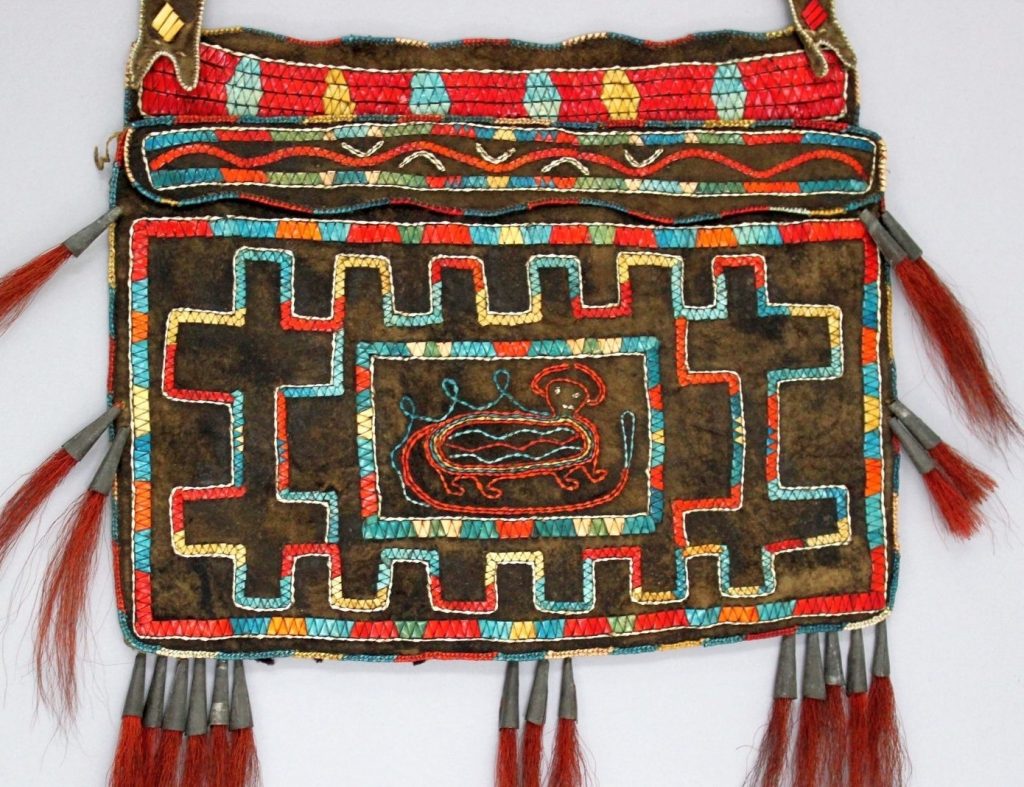A GRASAC Exhibit
Curated by Crystal Migwans
Four complementary perspectives on a beautiful carved Anishinaabe club, which is now found in the collection of the National Museum of the American Indian in Washington (NMAI 3/4643). Purchased by George Heye from W.O. Oldman in 1914. Made c1800-1850 from wood, metal, hair, paint.
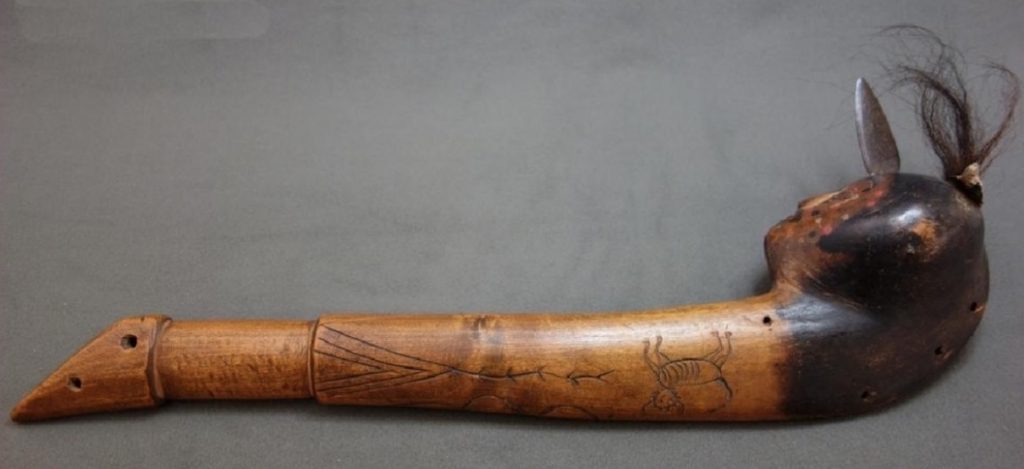
1) War Club
If we approach this object as a tool, it can best be described as a war club:
Before guns were widely available, clubs were the primary instrument of warfare in the Great Lakes. This ball-headed war club was carved from a single piece of wood with a dense knot forming the ‘ball.’ This heavy knot made a swing stronger and a strike harder, while the hooked curve of the shaft could redirect the blows of other weapons or disarm the opponent. A spike or blade could be embedded in the striking end to deadly effect. Clubs were gradually replaced by firearms, though clubs were still carried as part of warrior garb. Designs incised into the shaft might call upon certain powers for aid in battle, or describe the past victories of the bearer.
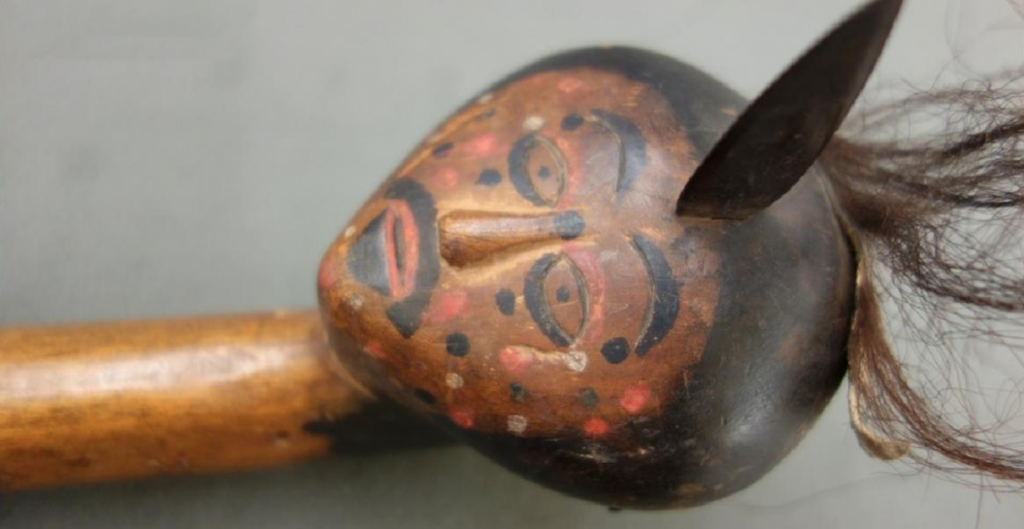
2) Ceremonial Club
From another angle, this object is a hybrid – something between war club and human figure – and can be seen as a ceremonial club:
A club might carry out its warlike purpose physically in battle, or spiritually in ceremony. This club’s painted face and wisp of hair make it impractical for battle, while its strong traditional symbolism speaks of higher powers. It was likely used as part of the dances and rituals of warfare. The face carved into the striking part of the head imparts an aspect of personhood, perhaps showing that this object would be filled with a spirit during ceremonies.
3) Pictographs
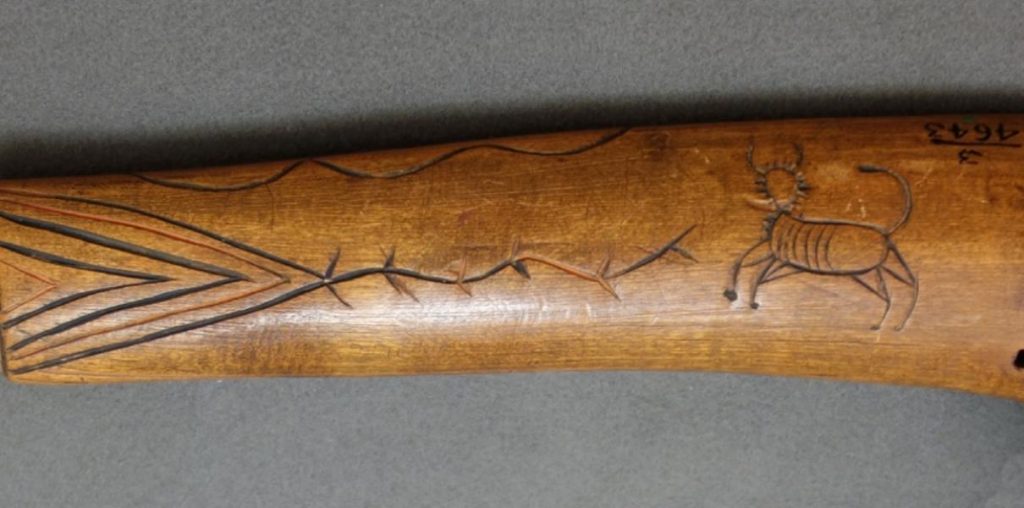
If we view the club simply as a surface to write on, we can focus on the meaning of the pictographs carved into the wood. The club becomes a story, or document:
Language and culture in Great Lakes cultures has been passed on primarily through oral tradition. But there are also ways of writing down a song, teaching, or message using a sort of visual short-hand. These symbols are commonly called pictographs or picture-writing (or hieroglyphics, by early ethnographers), and they range from orderly stanzas on a song board to warning signs on a rock to abstract patterns on clothing. The designs on this club are probably a personal story known only to the original bearer, but we can still pick out known figures from legend.
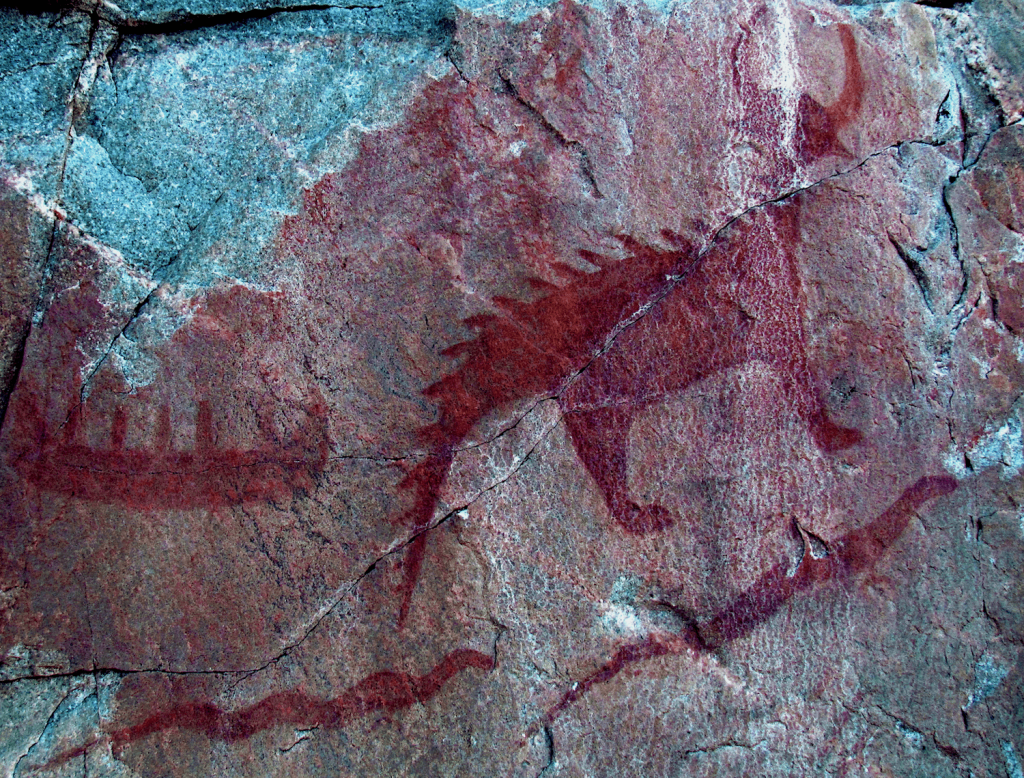
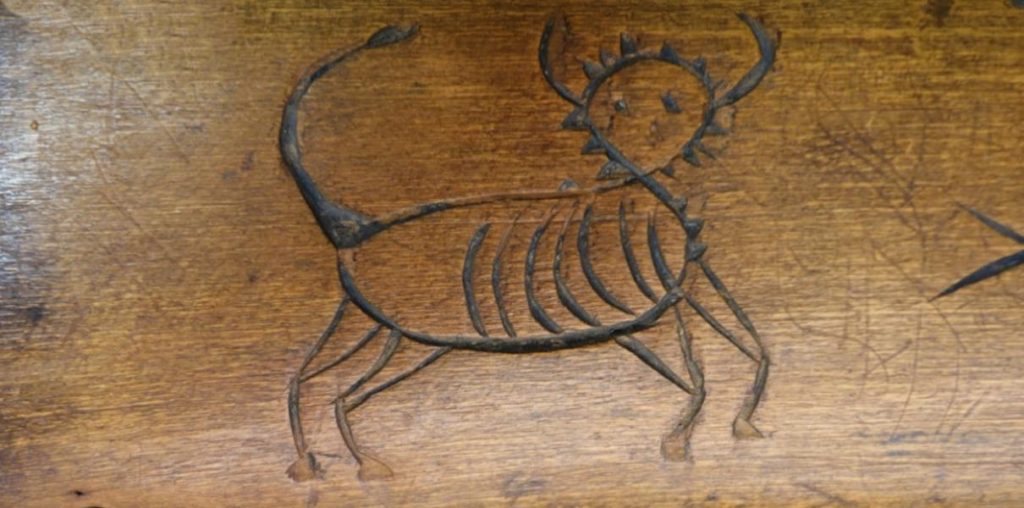
4) Mishibizhiw
We can approach the symbols on the club as pictographs (words in a text), or as iconography (images in an artwork). The iconography on this club includes two underwater panthers:
One each side of the club shaft is a horned creature. These creatures are Mishibizhiw or underwater panthers, the powerful underworld counterparts of Thunderbirds in the Anishinaabe cosmos. Here, the Mishibizhiw is shown with its ribs delineated and spikes radiating from its head. Details such as these are clues to the specific panther depicted. Stories are told of panthers who dwell in rivers or lakes, others who know medicines by their roots, and even some who fly in the night and shine yellow. This image may represent this last panther, with rays of light radiating from its head. On an item such as this, the power of this panther may have been invoked for a war ceremony, or it may represent a foe.
